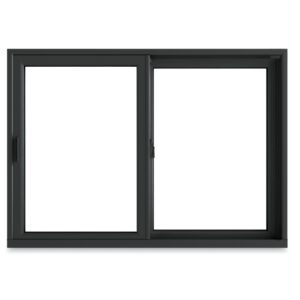
Now that you know the window types, what do you need to look for when you need new windows?

When your windows need replacing, the new ones should match the type of windows as the original to the greatest extent possible. Here's what to look for:
Continuity - When replacing your windows, you want to maintain the original architectural plans of the home if possible. Unless you want to do something drastic, keep the windows the same type.
HOA Approval - Sometimes the dreaded "Homeowner's Associations" require homeowners to keep their home the same as when they bought, to maintain the neighborhood aesthetics similar as initially planned.
Code - Sometimes, when a homeowner wants to change the design of their windows, they may want to turn a casement window into a double hung. Maybe they got tired of replacing the frame hardware over the years and thought when they buy replacement windows they will switch that window to a double hung. Sounds harmless, unless it is in a bedroom and it should meet safety code for a fire escape. For an example of egress and cannot be modified, even if you want that double hung.
What about the window material?
Another frequent concern is the material of the replacement window. While wood was most often used historically, fiberglass and vinyl windows are more typical on the market today. Homeowners want little to no maintenance so vinyl and fiberglass are suggested as replacement options by window dealers.
There are more reasons than this, of course, but this gives you a general idea before choosing what to look for when shopping for windows. Choose window types wisely so that you are not forced to buy another window ever again.
Type of Windows

Casement Windows
Casement windows might be the perfect choice if you're looking for a stylish and practical window. Here are the reasons why:
Full ventilation: Unlike other windows, casement windows offer full ventilation. They are hinged at the right or left side and open outward like a door, allowing fresh air to circulate easily in your home.
Effortless operation: Opening and closing casement windows is easy. There's no need to pull, push or lift them. You only need to use a hand crank, which makes the process effortless and fast.
Excellent visibility: Casement windows offer an unobstructed view of the outdoors because there is no pull rail in the center. You can enjoy the view or add grids for more design flair.
Energy efficiency: Casement windows have tight seals that keep your home draft-free. This reduces energy consumption and lowers your utility bills.

Double Hung Windows
Double-hung windows are an innovative, functional addition to any home. Here's why:
Ease of use: Double-hung windows feature a tilting mechanism, making cleaning the exterior of second or third-story windows easy.
Low maintenance: The innovative design of double-hung windows means fewer parts that could require repair or replacement, leading to less maintenance in the long run.
Versatility: Depending on your ventilation needs, you can open the top and bottom sash. This feature makes double-hung windows an excellent choice for all seasons.
Space-saving: Since double-hung windows don't protrude, they are a smart choice near patios, porches, and walkways. This design maximizes both interior and exterior space.

Sliding Windows
With sliding windows, you get an easy-to-use design that glides open on a flat track, either from the left or right side. They satisfy bedroom egress requirements while complementing various architectural styles.
Moreover, slidingwindows work great in tight spaces, such as walkways or patios, if you have limited space. They open smoothly without the need to swing outward, making them a popular choice.




1 Comment
[…] project. They will be familiar with current trends, technologies, installation techniques, and types of windows, assuring your windows are correctly […]